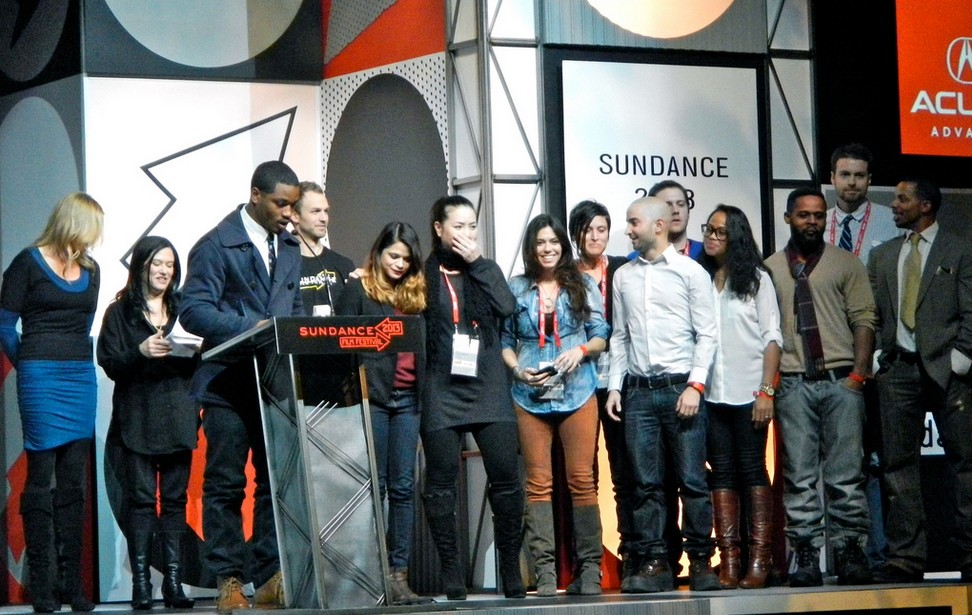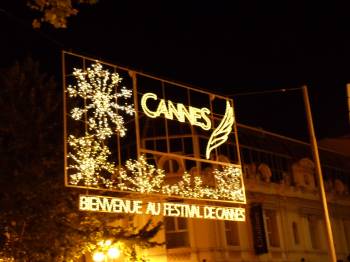
Sundance Narratives 2013-how did they fare in release?
Sundance narrative films are the ones that get the bulk of the media attention; their star power or discovery or indie cred frequently send some of these gems into financial success. But last year’s majority resulted in distributors overpaying for titles, titles going for next to nothing, or even failing to secure distribution. Frequently, the filmmakers and/or the distributors were in the red.
For all the talk of the slower fest this year, there are now 10 films that have secured seven figure deals. Last year’s fest had 14 or 15 (one has conflicting dollar amounts in reports). While this year’s deals are nowhere near the $9.75 Mil paid for The Way Way Back, it does suggest a healthier marketplace with sane sales prices. With that in mind, let’s take a look at how last year’s slate performed. Over 80% secured domestic distribution.
AWARDS POWER FOR US DRAMATIC
Last year’s US Dramatic award winners were also the top indie box office performers.
The highest grossing competition film, Fruitvale Station, won the Audience and Grand Jury awards. Though it failed to get an Oscar nomination, TWC managed a healthy $16 Mil + theatrically. That is notably better than the previous year’s jury winner Beasts of the Southern Wild.
The second highest grossing film from the US Dramatic section was The Spectacular Now. A24 which has tailored itself to films for younger demos (VERY VERY BOLD MOVE given how hard it can be to reach the under 25 audience for indies). The $1.5 Mil acquisition grossed $6.85 Mil theatrically.
Roadside Attractions snagged the Waldo Salt Screenwriting Award Winner In A World, which surprised many with a gross of just under $3 Mil. Afternoon Delight, which won last year’s Directing Award, made $174k with Film Arcade doing the theatrical and Cinedigm handling digital. Shane Carruth’s self-distributed Upstream Color won a special jury prize for sound. The film is the highest grossing DIY release from last year’s festival with a total of $444k and a very healthy iTunes total, however, it is likely that Gravitas Ventures pushed Sound City into the ultimate #1 spot. Never under-estimate the power of a music doc. Mother of George and Ain’t them Bodies Saint’s shared the cinematography prize. Mother Of George was Oscilloscope’s highest grossing release last year at over $157k and Ain’t Them Bodies Saints made $371K under the direction of IFC. That total is arguably a disappointment with all of the hype surrounding the film, stellar critical praise and the seven figure acquisition price.
In contrast, the films that did not win awards had very mixed results. Many of these films (award winners included) had $1-8 Million production budgets and, in fact, most failed to recoup from their initial distribution deals. Perhaps their investors will see money back eventually.
The non-award-winners include C.O.G. and Concussion. Both finished with around $50k theatrically. Focus World/Screen Media can’t be happy with the performance of C.O.G., the first David Sedaris short story turned into a film. Concussion was day and date release and Radius TWC has said the film was a top performer on digital platforms. Without publicly available data, we have to take their word for it. Meanwhile, Kill Your Darlings just barely passed the $1 Mil mark for SPC, who paid around $2 Mil for the film. They acquired a number of other territories and the film will obviously be stronger on digital platforms. It is the second year in a row that SPC acquired a film featuring a younger cast, then held onto it to screen 8 months later at Toronto International Film Festival and failed to earn back ½ of their acquisitions cost in theatrical release. The strategy of waiting to launch out of TIFF and going for the younger American audience clearly isn’t working for them and should be rethought. I personally think it’s a mix of both. In this day and age, I can think of very few reasons where waiting 8 months between festivals makes any sense.
Also underperforming to the acquisitions price was SPC’s Austenland. It has grossed $2.15 Mil in the US and is the highest grossing non award winning US Dramatic film. However SPC paid $4.5 Mil in partnership with SPWA. The additional territories and better digital viewing could possibly pull the film to break even, still well below what one wants from that kind of high profile buy.
Far on the other side of the spectrum are the D.O.A.’s The Lifeguard and Emanuel and the Truth About Fishes. The former released by Screen Media and the latter by Tribeca Film and Well Go USA. In both cases, bad reviews clearly harmed these films which both had semi-marketable casts. Even with solid digital revenue, both films, which were likely acquired for under six figures, can be called flops. The same can be said for Magnolia’s Touchy Feely which managed $36k, not even 1/15th of Lynn Shelton’s Humpday. The 35% enthusiasm rating on Rotten Tomatoes indicates how the film was received.
CBS Films acquired Kings of Summer (originally called Toy’s Attic). Though they stated in their original acquisitions announcement that the film would open wide, it never did, so one has to assume they tried to cut their losses and the $1.315 Mil it made theatrical was nowhere near what they were anticipating. The film has much of the same demo as The Spectacular Now, but with none of the star power or awards profile attention.
WORLD DRAMATIC FAILURE
75% of the World Dramatic slate lacks domestic distribution as of this post. The other three films include one yet to be released (despite it winning an Award at Sundance and being UK’s Oscar submission (Metro Manila), one that failed to crack $15k (Il Futuro) and one modest performing success. Crystal Fairy is the only world dramatic film to have any kind of traction in the US. The Day one selection made $192k theatrically in the care of IFC.
NEXT STRUGGLES
Unlike when Sleepwalk With Me became a hit for IFC, 2013’s NEXT crop of films were largely modest to middling performers. A Teacher failed to crack $10k in the hands of Oscilloscope, Pit Stop (which TFC handled for festival distribution) went to DVD/Digital with Wolfe, Milkshake and Newlyweeds barely made a whimper with Phase 4. Audience Award Winner, This is Martin Bonner couldn’t pass $15k and Strand Releasing’s I Used to be Darker stopped short of $25k. Blue Caprice fell just short of $100k for IFC/Sudance Selects. At one point, it was in 36 theaters. For a film that received such a nice marketing push, it is safe to call it an underperformer at the box office, even more so with its low seven figure acquisitions price which didn’t finalize until March after the festival.
I have already written about Escape From Tomorrow and it’s self financed theatrical/digital performance with Producer’s Distribution Agency. The film has failed to make back its budget through the combined total, and that doesn’t factor in any P&A spent or revenue splits. The one real bright spot is Computer Chess. Kino Lorber had one of its best theatrical runs for a narrative film, solid festival exposure and wisely kept the film in the press and turned down an offer from TIFF that would have made them take a break. The film quietly passed the $100k mark which, given its no-name cast, low fi production values, and vintage style, is quite an accomplishment.
MIDNIGHT SLACKS
While genre films consistently perform better on VOD/Digital, the theatrical realities of last year’s midnight slate is nothing short of a total flop. The Rambler (Anchor Bay), Hell Baby (Millennium), Ass Backwards (Gravitas Ventures), In Fear (Anchor Bay), Magic Magic (Sony Pictures Worldwide) wound up going direct to DVD/Digital, grossing under $10k theatrically, or not reporting box office totals at all. V/H/S 2 barely passed $21k in the hands of Magnolia, a far cry from how it’s predecessor did. Again these films often performed quite well digitally, but for the festival that launched the Saw franchise, none of the entries really made a dent.
We Are What We Are (EOne) is the only Midnight film to pass $50k. Kink, which The Film Collaborative is handling for festivals, was just acquired by MPI Media. Virtually Heroes has yet to make a deal.
PREMIERE FLOPS
Sweetwater, Big Sur, and Charlie Countryman all failed to make a dent at the box office and were either DIY or their distributor did not report the acquisitions price. Each had some form of star power and must be huge disappointments for their financiers. The Look of Love also failed to register theatrically for IFC. The film was Day/Date and if any company can make money back on the digital it would be them. But it’s far from what one wants to see for a seven figure acquisition.
PREMIERE BIG DEALS
Don Jon was bought for $4 Mil by Relativity Media with a $25 Mil P&A. The film has failed to gross $25 Mil at the box office though it is the highest grossing film from last year’s fest. Likely it will barely break even. The Way Way Back was the highest selling direct acquisition at the fest, bought for an estimated $9.75 mil for North American rights and several other territories, but the P&A is unknown. The film exceeded $21 Mil making it ultimately a modest performer for Fox Searchlight though it far outshined previous acquisitions, Stoker and The East, which they acquired pre-fest and neither of which managed over $2.5 Mil.
SPC snagged Before Midnight and the film is the highest grossing of the trilogy with slightly over $8 Mil. It also was just nominated for an Oscar. Closing night film jOBS, on the other hand, only saw a 27% approval rating on Rotten Tomatoes, has a Razzie Award nod and their self financed release with Open Road failed to recoup their costs. Worldwide, the film has grossed almost $36 mil likely on the strength of the Ashton Kutcher name.
We’re anxious to see how this year’s crop performs in release. Already, one World Documentary film, Sepideh Reaching for the Stars, has launched simultaneously with its US premiere on iTunes in the US and Canada, which is a first.
Bryan Glick January 24th, 2014
Posted In: Distribution, Film Festivals, Theatrical
Tags: A Teacher, A24, Ain't Them Bodies Saints, Anchor Bay, Ass Backwards, Austenland, Before Midnight, Big Sur, Blue Caprice, C.O.G. Concussion, CBS Films, Charlie Countryman, Cinedigm, Computer Chess, Crystal Fairy, Don Jon, Emanuel and the Fishes, EOne, Escape from Tomorrow, Fox Searchlight, Fruitvale Station, Gravitas Ventures, Hell Baby, I Used to be Darker, IFC Films, Il Futuro, In A World, In Fear, jOBS, Kill Your Darlings, Kings of Summer, Kink, Kino Lorber, Magic, Magnolia, Metro Manila, Milkshake, Millennium, Mother of George, MPI Media, Newlyweeds, NEXT, Open Road, Oscilloscope, Pit Stop, Producer's Distribution Agency, Radius TWC, Relativity Media, Roadside Attractions, sales prices, Sepideh Reaching for the Stars, Sony Picture Classics, Sound City, Sundance narrative films, Sweetwater, The Lifeguard, The Look of Love, The Rambler, The Spectacular Now, The Way, This is Martin Bonner, Touchy Feely, Tribeca Film, Upstream Color, V/H/S 2, Virtually Heroes, Way Back, We are what we are, Well Go

